Hematopoietic stem cells and blood cells
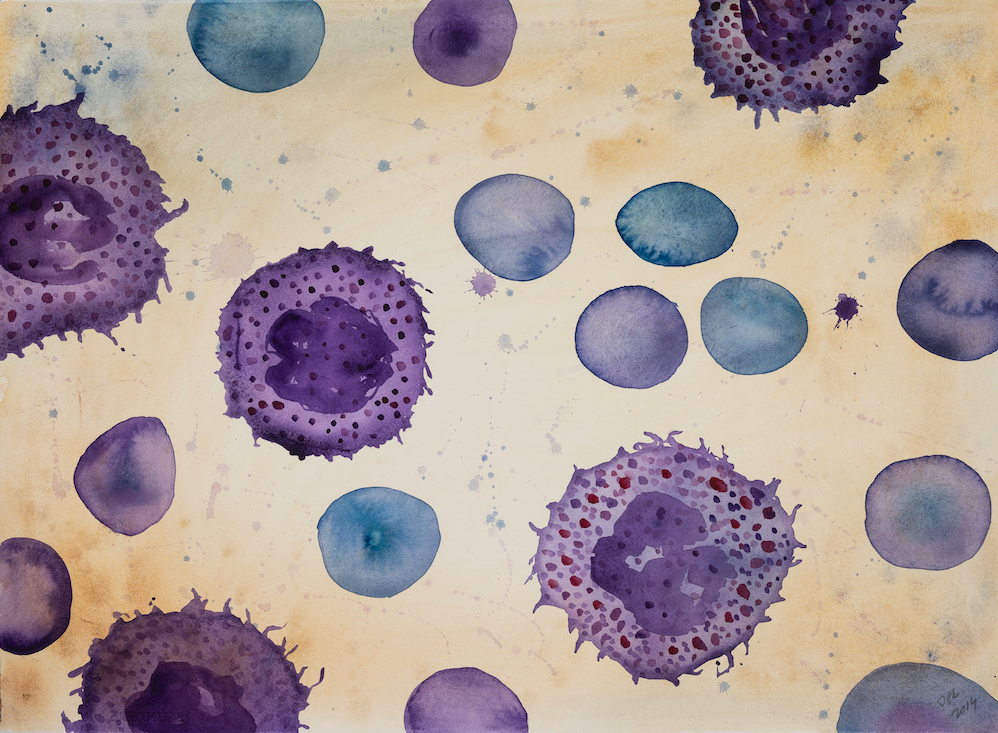
Biorelevant culture of hematopoietic cells
Laminins play a major role in the hematopoietic microenvironment
Laminins are widely expressed in human bone marrow play a major role in the hematopoietic microenvironment. Laminin isoforms 521, 511, 411 and 421 are the most abundant, synthesized by human bone marrow stromal cells (Siler, 2000). Laminin 521 and laminin 511 have been shown to have strong adhesive interaction with CD34+ human hematopoietic stem cells (HSC) and progenitor cells, mediated largely via the integrin a6B1 receptor (Siler, 2000; Qian, 2006). Laminin 521 and laminin 511 is also highly adhesive to lineage-committed myelomonocytic and erythroid progenitor cells and most lymphoid and myeloid cell lines (Gu, 2003). These alpha-5 containing laminins also stimulate migration and proliferation of human hematopoietic progenitor cells (Gu, 2003), suggesting an important physiological role of laminins during hematopoiesis. Other laminin isoforms, such as laminin 111, show only weak adhesive interaction (Siler, 2000; Gu, 2003). Rodent CD34+ HSC transplantation experiment has shown that the laminin-integrin interaction also mediates homing (Qian, 2006; Carvalho, 2008).
Biolaminin 521 is an optimal substrate for large-scale production of clinically compliant megakaryocytes and platelets
Due to the biorelevant environment created, Biolaminin 521 is an optimal substrate for clinically compliant hematopoietic differentiation. In a publication by Börger et al, the authors present an animal origin-free and defined protocol for the generation of functional megakaryocytes and platelets from an HLA-universal iPSCs on the human recombinant Biolaminin 521 culture substrate (Börger, 2015).
Biolaminin 521 has also successfully been used for large-scale MK production. With an effective, xeno-free and scalable system, Biolaminin 521-coated microcarriers increased MK production per iPSC by up to 10-fold (18.7×107 MKs per 50 ml medium). MKs obtained in this system showed typical features of mature MKs and were able to produce PLTs in vitro and in vivo (Eicke, 2018). Laminins also have an important contribution to thrombus formation in vivo. Schaff and colleagues (2013) show that laminin 411, laminin 511, and laminin 521, but not laminin 211, allow efficient platelet adhesion and activation (via integrin a6B1) across a wide range of arterial wall shear rates.
A Biolaminin 521 coated microcarrier-based embryoid body (EB) platform was reported to support superior red blood cell (RBS) generation from human pluripotent stem cells (Sivalingam, 2016). The authors developed a scalable, serum- and animal origin-free, and chemically defined microcarrier-based platform using human recombinant Biolaminin 521 as an extracellular matrix for hPSC expansion, EB formation, and subsequently hematopoietic differentiation of hPSC. Improved survival and better quality EBs generated with the microcarrier-based method resulted in significantly improved mesoderm induction and resulted in drastic improvement in hematopoietic precursor expansion and the yield of RBS generation compared to a conventional EB-based differentiation method.
Protocols:
What our customers say
“Our iPSC culture on LN521 is easy and stable. The use of LN521 allows us to maintain the iPSCs in monolayer culture for a prolonged time and also supports the differentiation of MKs and PLTs. It represents a good alternative to other matrices especially as it is fully defined and therefore compatible with GMP standards.”
Dr. Dorothee Eicke,
Hannover Medical School, Germany
Succeed with your application
-
Large-scale production of megakaryocytes in microcarrier supported stirred suspension bioreactors
Eicke D., Baigger A., Schulze K., Latham S.L., Halloin C., Zweigerdt R., Guzman C.A., Blasczyk R., Figueiredo C.Scientific reports, 2018
Read more -
Generation of HLA-Universal iPSC-Derived Megakaryocytes and Platelets for Survival Under Refractoriness Conditions
Börger A-K., Eicke D., Wolf C., Gras C., Aufderbeck S., Schulze K., Engels L., Eiz-Vesper B., Schambach A., Guzman C.A., Lachmann N., Moritz T., Martin U., Blasczyk R., Figueiredo C. Molecular Medicine, 2016
Read more -
Superior Red Blood Cell Generation from Human Pluripotent Stem Cells Through a Novel Microcarrier-Based Embryoid Body Platform
Sivalingam J., Lam A.T., Chen H.Y., Yang B.X., Chen A.K., Reuveny S., Loh Y.H, Oh S.K. Tissue Eng Part C Methods, 2016
Read more -
Instructions 010: Embryoid body formation from human pluripotent stem cells
Protocol for a standardized, serum-free EB formation of hPSCs cultured on Biolaminin
Open pdf -
Instructions 001: Coating with Biolaminin substrates
Protocol and concentration calculations for coating cultureware with Biolaminin
Open pdf
Biolaminin Key Advantages
Laminin 521, 511, 411 and 421 are the most abundant isoforms in bone marrow. Biolaminin 521 is an optimal substrate for clinically compliant hematopoietic differentiation, such as megakaryocytes, platelets, and red blood cells.
Specific laminin isoforms are present in different tissue microenvironments and are essential for cell survival, proliferation, and differentiation. Biolaminin products allow you to imitate the natural cell-matrix interactions in vitro.
Our products have consistent composition and quality. This enables minimized variability between experiments and uniform pluripotency gene expression profiles between different cell lines.
All our matrices are chemically defined and animal origin-free, which makes them ideal substrates for each level of the scientific process – from basic research to clinical applications.
Numerous scientists have found our products and finally succeeded in their specific stem cell application. The power of full-length laminins incorporated into various cell systems is well documented in scientific articles and clinical trials.
Recommended products
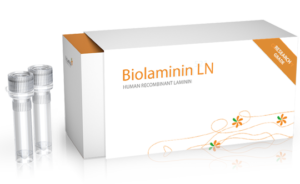
Biolaminin 521 LN (LN521)
Human recombinant laminin 521
Biolaminin 521 LN is the natural laminin for pluripotent stem cells and therefore reliably facilitates self-renewal of human ES and iPS cells in a chemically defined, feeder-free and animal origin-free stem cell culture system. LN521 is animal origin-free to the primary level.View product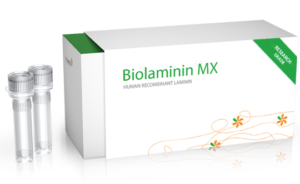
Biolaminin 521 MX (MX521)
Human recombinant laminin 521
Biolaminin 521 MX is the natural laminin for pluripotent stem cells and therefore reliably facilitates self-renewal of human ES and iPS cells in a chemically defined, feeder-free stem cell culture system. MX521 is animal origin-free to the secondary level.View product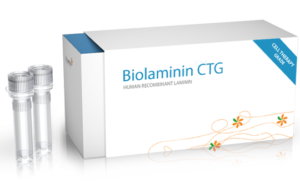
Biolaminin 521 CTG (CT521)
Human recombinant laminin 521
Biolaminin 521 CTG is a full-length, human, recombinant laminin 521 substrate, the only one of its kind on the market, providing an optimal environment for feeder-free culture of human PSCs, MSCs and most anchorage-dependent progenitor cell types. CT521 is animal origin-free to the secondary level and designed for clinical studies.View product
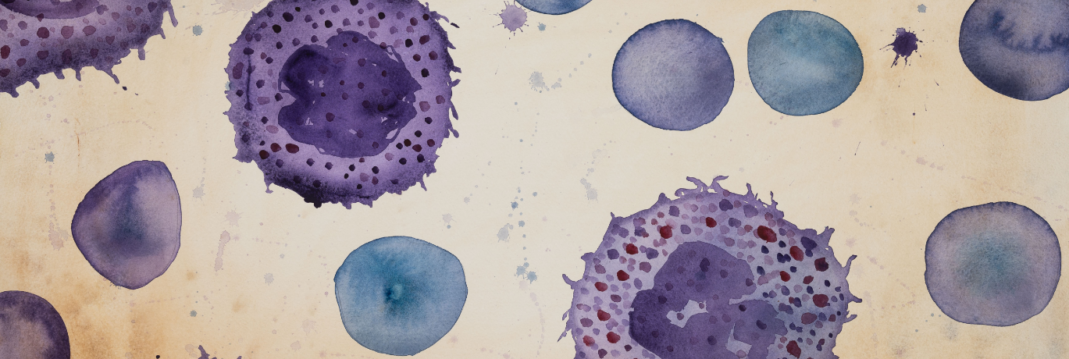
Talk to our team to get a custom proposal
We are here to help you in your journey.